If you’ve never made bread before, Irish soda bread – faster and easier than biscuits or cornbread, and just as delicious and versatile – is the place to start. And what better day than today to make a freshly baked loaf that is so soul-satisfying it’s a daily staple in Ireland?
Toast St Patrick with a Guinness, a sharp aged cheddar and a crusty loaf of classic soda bread. Or unwind with a hot cuppa and the cranberry-orange version, delicately sweet like a scone but with the lighter texture of a bread.
Traditional Irish soda bread requires only four ingredients – flour, buttermilk, baking soda and salt. It mixes up in minutes and goes into the oven with no kneading necessary. For so little work, it’s shockingly tasty – a crisp crust with a soft interior that contains the moistness and faint tang of buttermilk.
American versions of soda bread are sweetened, with dried currants and caraway seeds added. I’m giving you two recipes here, one for the classic bread, an excellent companion for any meal, and one for a lightly sweet cranberry-orange variation. Both are as good toasted the next day as they are fresh from the oven.
The worst versions of soda bread are dry, with the unpleasantly metallic taste of excess baking soda. But the best versions of soda bread are moist and light, soft and delicate, like a giant loaf of the best scone you’ve ever had.
I promise a warm slice from one of these golden rounds will dissolve any doubts you may have about how any bread so easy to make could possibly be so good.
Let’s start with the fab four ingredients: flour, soda, salt, buttermilk. Please don’t quibble with me on the two flours in the picture – I’m using both so you can see a brown soda bread variation.
Buttermilk is magic for quick breads. Its acidity reacts with sodium bicarbonate (baking soda) to produce carbon dioxide, the air which makes the dough rise, and water, which adds additional moistness to the bread.
Even in Ireland, brown soda bread is made with a mix of white and whole wheat flours. I’m using half and half here.
Add buttermilk.
Stir with a fork until well mixed. The dough is supposed to be sticky.
No kneading needed, just shaping. Turn the dough out on a well-floured surface, lightly dust flour on top and pat dough into circular shape with a rounded top.
Traditionally Irish soda bread was cooked on the stovetop in a cast iron pan, a method that still makes soda bread an excellent option for camping. I’m baking mine for ease, but I love using my cast iron skillet instead of a regular baking sheet. Use a flat spatula to help transfer the dough.
Use a sharp pointed knife to score an X on top of the loaf. This helps the loaf keep its shape without cracking.
It bakes up beautifully domed and crusty.
Let it cool a few minutes before cutting.
Crisp on the outside, warm and moist inside – you will not believe how fast fresh soda bread will disappear, especially if you serve it with Irish butter.
The cranberry-orange variation adds some sugar to the dry ingredients, and then a bit of cold butter blended in.
Swap an egg in for some of the buttermilk.
Zest one orange to add in with the wet ingredients. If you have a microplane grater, it’s much easier to hold the orange with one hand and pull the sharp side of the microplane across with the other (rather than pushing the orange across the grater, as you would with cheese). I had to let go of the orange to take the picture here, but you get the idea.
Pour the wet ingredients into the dry.
Stir with a fork until well mixed. Again, the dough will be very sticky.
Add cranberries, dusted with a bit of flour to keep them well distributed.
No kneading, just handle with enough flour below and on top to shape the dough. This double recipe fills a 10″ cast iron skillet. Or just use a baking sheet.
I love how the loaf fits perfectly in the skillet.
And it pops right out for cooling.
This is a gorgeous golden loaf. It has the gentle sweet flavor of a scone with the lighter texture of a bread, and the sugar gives it extra moistness.
Whether you want a sweet loaf or an all-purpose bread, it doesn’t get faster or easier than soda bread. And the sensory payoff – the heavenly smell and taste of freshly-baked bread – is exceptionally great. St Patrick’s Day is a good excuse to start what is sure to be a much-requested tradition in your kitchen.
Irish Soda Bread (Classic and Cranberry-Orange)
Soda bread is the ultimate quick bread – from mixing bowl to oven in mere minutes, and a warm crusty loaf in no time. In Ireland, soda bread is a four-ingredient staple (flour, buttermilk, baking soda, salt), but the American version is generally richer, sweeter and flavored with dried fruit and/or caraway seeds. Cranberry-orange recipe adapted from Ina Garten.
Classic soda bread ingredients
- 2 cups flour (white, whole wheat or a mix; I like half/half)
- 1/2 teaspoon baking soda
- 3/4 teaspoon kosher salt (or 1/2 teaspoon table salt)
- 1 cup buttermilk
Classic soda bread preparation
- Preheat oven to 375 degrees F.
- In a mixing bowl, add flour, baking soda (make sure baking soda has no clumps) and salt. Use a fork to stir.
- Pour in buttermilk and stir until dough is fully mixed (it will be sticky). Turn the dough out onto a well-floured surface. Lightly dust flour on top and use your hands to pat the dough into a circular shape with a rounded top.
- Use a flat spatula to help transfer the dough to a cast-iron pan or baking sheet (a seasoned cast iron pan should not need any additional greasing, but you may want to lightly grease an uncoated baking sheet or use parchment paper to prevent sticking). Use a sharp knife to cut a large X in the top of the loaf (this helps the loaf keep its shape without cracking).
- Bake until top is golden brown and dry looking, about 30-35 minutes. If the dough looks wet/sticky in the X cutout, it needs a few more minutes to cook through.
- Cool loaf on a wire rack. Bread is just as wonderful warm or toasted the next day.
Cranberry-orange soda bread ingredients (double-size loaf)
- 4 cups all-purpose flour
- 1/4 cup sugar
- 1 teaspoon baking soda
- 1 1/2 teaspoons kosher salt (or 1 teaspoon table salt)
- 4 tablespoons (1/2 stick) cold butter, cubed
- 1 3/4 cups cold buttermilk, shaken
- 1 egg
- Orange zest from 1 large orange (about 1 teaspoon)
- 1 cup dried cranberries (or currants/raisins)
Cranberry-orange soda bread preparation
- Preheat oven to 375 degrees F.
- In a mixing bowl, add flour, sugar, baking soda (make sure baking soda has no clumps) and salt. Add cubed butter and use your fingers to rub the butter into the flour until you no longer see chunks of butter.
- Use a fork to mix together buttermilk, egg and orange zest until egg is well mixed in. Pour into dry ingredients and stir with fork until well mixed (it will be very sticky). Mix a bit of flour in with the cranberries and stir into dough.
- Turn the dough onto a well-floured surface. Lightly dust flour on top and use your hands to pat the dough into a circular shape with a rounded top.
- Use a flat spatula to help transfer the dough to a cast-iron pan (at least a 10″ diameter) or baking sheet (a seasoned cast iron pan should not need any additional greasing, but you may want to lightly grease an uncoated baking sheet or use parchment paper to prevent sticking). Use a sharp knife to cut a large X in the top of the loaf (this helps the loaf keep its shape without cracking).
- Bake until top is golden brown and dry looking, 45-55 minutes. If the dough looks wet/sticky in the X cutout, it needs a few more minutes to cook through (you can also test with toothpick, but it will of course not reach through the loaf).
- Cool loaf on a wire rack. Bread is just as wonderful warm or toasted the next day.
Notes
- Buttermilk substitutes: for 1 cup buttermilk, combine 1 scant cup milk with 1 tablespoon white vinegar or lemon juice; for 1 3/4 cups buttermilk, combine 1 2/3 cups buttermilk with 5 teaspoons white vinegar or lemon juice. You may also use plain yogurt thinned with enough milk to a pourable consistency.
- Traditional soda bread recipe can be doubled to make an extra-large loaf (fills a 10″ cast iron skillet; bake for 45-55 minutes). And the cranberry-orange soda bread dough can be split two smaller loaves (bake for 30-35 minutes).
- To make a single-size cranberry-orange loaf: if you don’t want to bother with a half-egg, you can simply use 1 cup of buttermilk and omit the egg entirely. To make a half-recipe with the egg, use 3/4 cup plus 2 tablespoons of buttermilk, and 2 tablespoons of a beaten egg.
- If you prefer your bread in a loaf shape, you can plop the dough into a buttered loaf pan. Traditional soda bread recipe makes a single loaf; cranberry-orange recipe makes two loaves.
- Other variations: try currants or raisins; or add a tablespoon of caraway seeds (2 tablespoons for double-size).
- Stovetop cooking: flatten dough to 1/2-inch thick and cut into wedges. Cook 6-8 minutes per side over medium-low heat.
Here’s the link to a printable version.

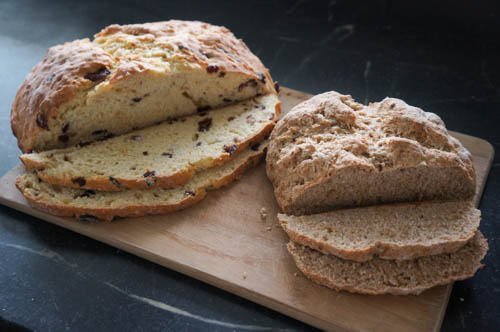
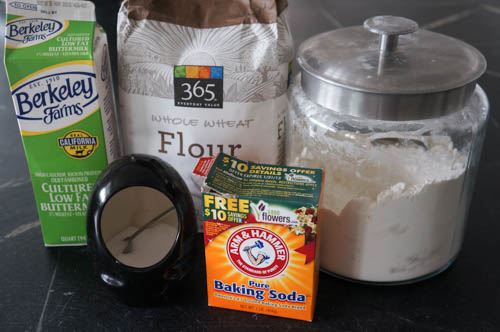
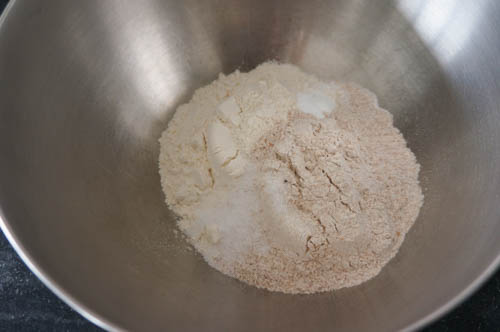
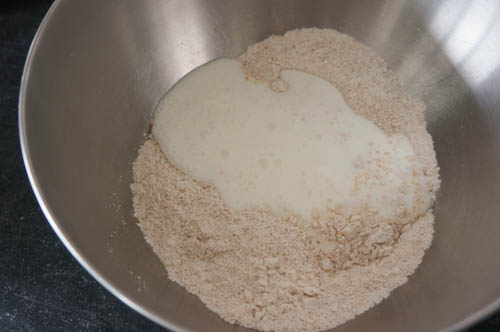
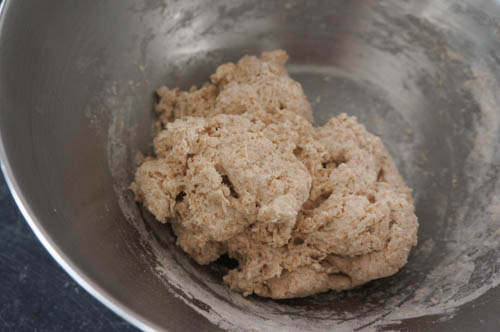
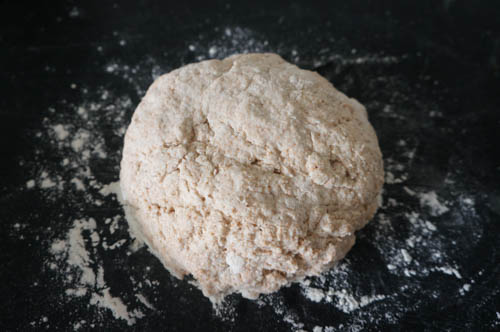
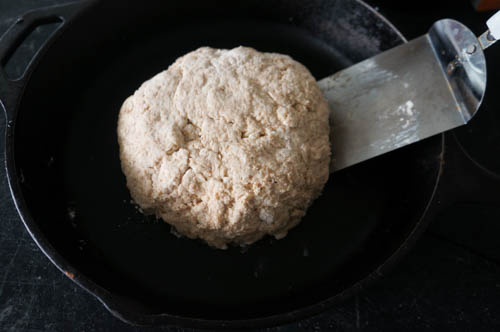
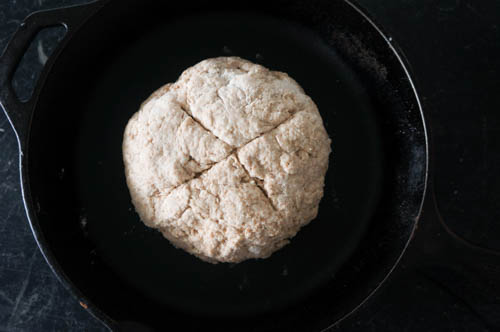
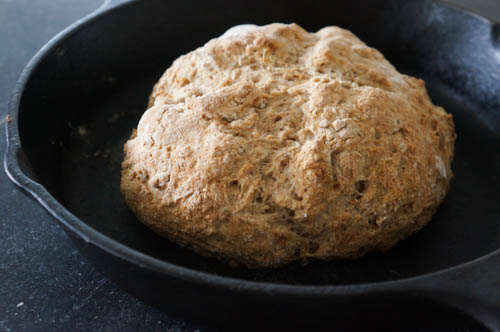

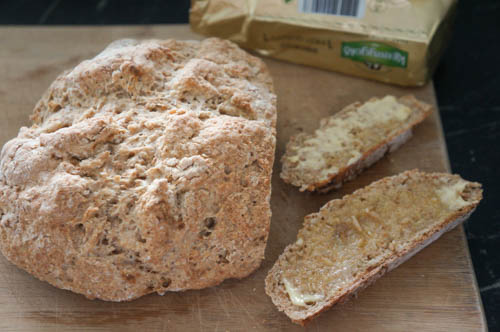
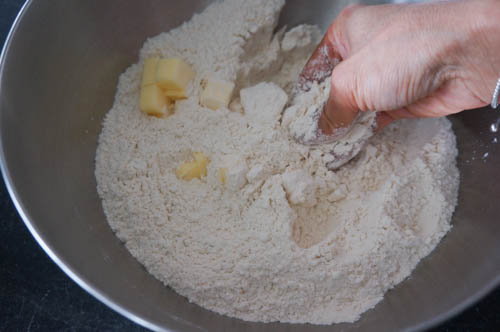
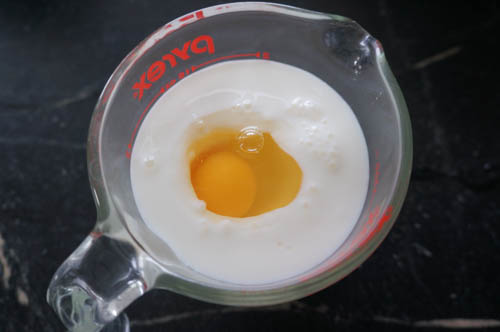
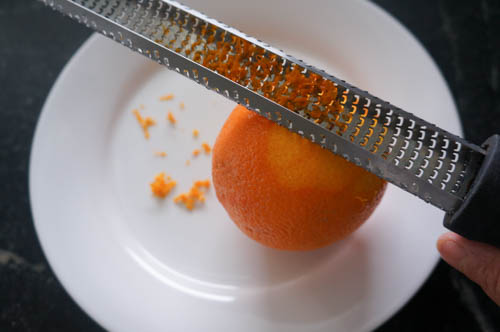
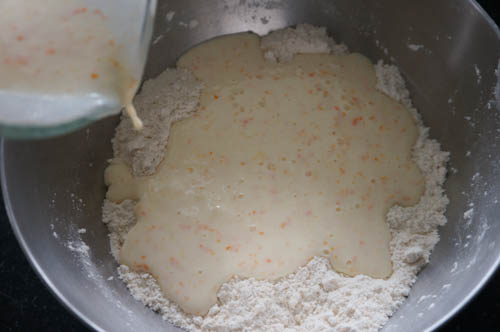
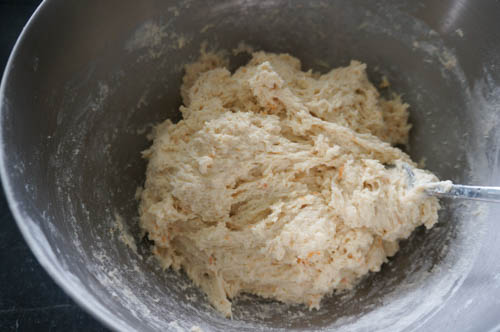
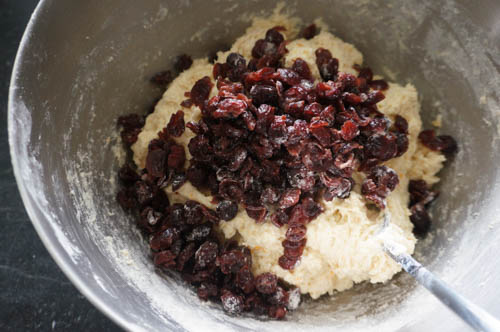
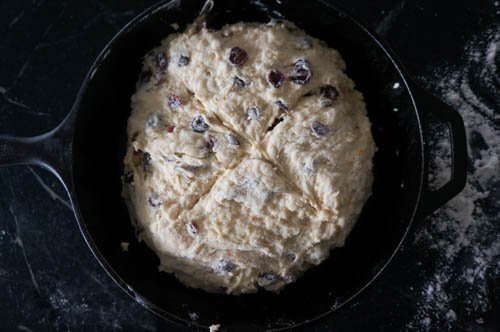
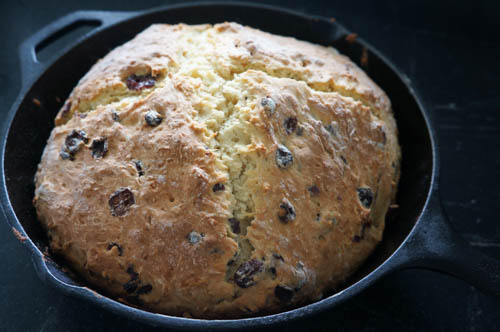





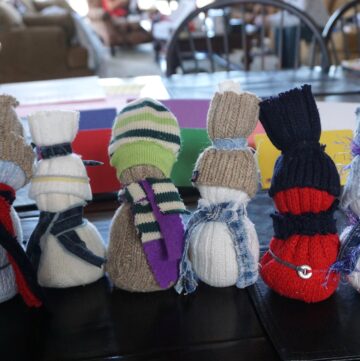
I’m not a fan of cranberries, but this would be lovely with some walnuts and raisins. Might just try it as it looks like a great recipe. Thanks 🙂
Both are amazing…even better than I thought they would be. Thanks!
This is Ina Garten’s.
hi laura – yes! credit is in the recipe. 🙂 i have my own recipes here as well as great recipes from others. i always cite my source. happy holidays!